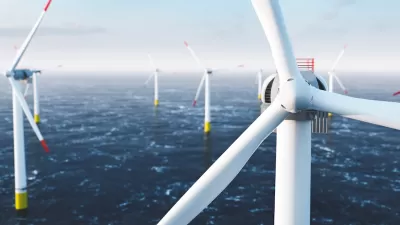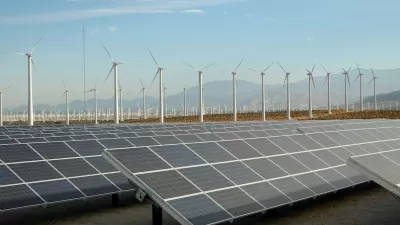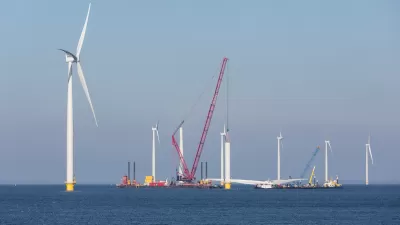The rush to secure coastal leases for wind energy production is causing some critics to call for stronger scrutiny from regulatory agencies.

The rapid growth of offshore wind projects in California is prompting concern from some residents and environmental groups leery of the potential of massive wind farms to transform the coastal environment in unpredictable ways.
As Julie Cart explains in an article for CALmatters, “The state’s blueprint envisions offshore wind farms producing 25 gigawatts of electricity by 2045, powering 25 million homes and providing about 13% of the power supply.” Last year, the federal government auctioned off 583 square miles off the Northern and Central California coast for wind leases.
“The projects will be a giant experiment: No other floating wind operations are in such deep waters.” Additionally, “Each of the wind farms off Humboldt and Morro Bay will require an extensive network of offshore and onshore development, including miles of undersea transmission lines, expanded ports, new or upgraded onshore substations and electrical distribution networks.”
Potential risks include the overindustrialization of coastal areas, the disruption of migrating sea life and birds, and excessively high maintenance costs. The California Coastal Commission, one of the agencies responsible for permitting, acknowledges the timeline is somewhat rushed, but claims that “through ‘adaptive management’ — the ability to adjust policies and requirements as conditions change — detrimental effects can be avoided or mitigated.”
FULL STORY: “A massive enterprise’: California’s offshore wind farms are on a fast track

Alabama: Trump Terminates Settlements for Black Communities Harmed By Raw Sewage
Trump deemed the landmark civil rights agreement “illegal DEI and environmental justice policy.”

Study: Maui’s Plan to Convert Vacation Rentals to Long-Term Housing Could Cause Nearly $1 Billion Economic Loss
The plan would reduce visitor accommodation by 25% resulting in 1,900 jobs lost.

Planetizen Federal Action Tracker
A weekly monitor of how Trump’s orders and actions are impacting planners and planning in America.

Waymo Gets Permission to Map SF’s Market Street
If allowed to operate on the traffic-restricted street, Waymo’s autonomous taxis would have a leg up over ride-hailing competitors — and counter the city’s efforts to grow bike and pedestrian on the thoroughfare.

Parklet Symposium Highlights the Success of Shared Spaces
Parklets got a boost during the Covid-19 pandemic, when the concept was translated to outdoor dining programs that offered restaurants a lifeline during the shutdown.

Federal Homelessness Agency Places Entire Staff on Leave
The U.S. Interagency Council on Homelessness is the only federal agency dedicated to preventing and ending homelessness.
Urban Design for Planners 1: Software Tools
This six-course series explores essential urban design concepts using open source software and equips planners with the tools they need to participate fully in the urban design process.
Planning for Universal Design
Learn the tools for implementing Universal Design in planning regulations.
Caltrans
Smith Gee Studio
Institute for Housing and Urban Development Studies (IHS)
City of Grandview
Harvard GSD Executive Education
Toledo-Lucas County Plan Commissions
Salt Lake City
NYU Wagner Graduate School of Public Service





























